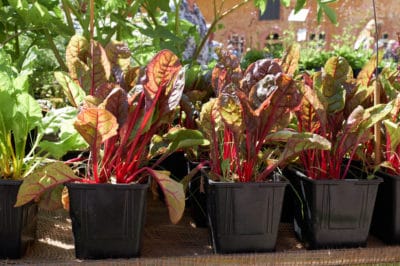Choosing Containers
Container material really doesn’t make much difference in most cases – clay or plastic pots and wooden planters all work well. The containers can be square, rectangular or round. Depth is important, however, especially for cylindrical varieties. Choose containers a minimum of 10 inches deep, and 12 inches is even better. Make sure the containers drain well to prevent waterlogged soil and damping off in seedlings.
The Soil Mix
Beets need plenty of nutrients to grow well. They also prefer light, friable soil, both because their roots need room to expand and to help prevent drainage issues. A high-quality organic potting mix is a good choice. If you have good garden soil, you can use that, but enrich well with compost or rotted manure (don’t use fresh manure). Feed at least once with organic fertilizer or compost tea.
Sowing Beet Seeds
Sow beetsjust as you would in the garden. Plant about ½ inch deep and two inches apart. Water well. In hot, dry weather, soak seeds overnight before planting. Thin with scissors to prevent damage to roots.
Best Varieties for Containers
Smaller beet varieties and cylindrical beets are the best choices for containers. Here are a few:
- Chioggia has red- and white-striped flesh.
- Detroit Dark Red – classic round red beet, also good for greens
- Formanova – a cylinder-shaped beet
- Golden – gold-colored rather than red
- Crapaudine – very old variety, cylinder shaped
- Crosby Egyptian – great flavor, more flat than round
Containers Offer Mobility
Although beets grow best in cool conditions with lots of sun, containers allow you to move the plants to the best advantage when growing in fall and winter. Protect from heavy freezes by moving into the garage. As light levels decrease in fall and winter, move containers for maximum sun. If spring rains are heavy, cover containers to reduce risk of waterlogged soil and damping off.
Harvest Time
Most beets have a short time to maturity and will be fully developed within 60 to 75 days at most. However, you can grow beets for micro greens, which means you can start to harvest when they are only a few inches tall. Simply cut with scissors. Greens can be harvested any time after they reach 6 inches in height.
